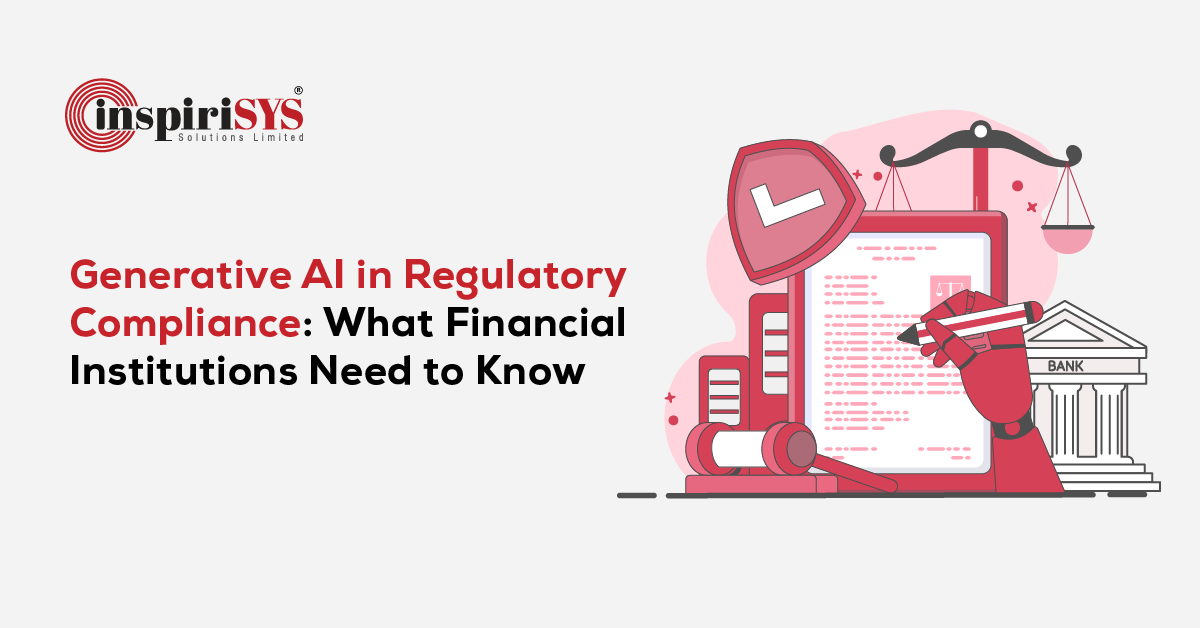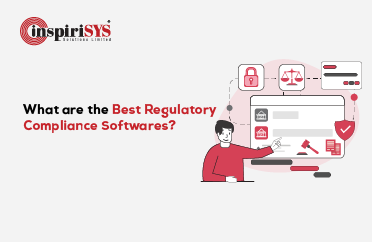Quick Summary: As compliance responsibilities grow more complex, many institutions are assessing how Generative AI can support their regulatory obligations. The technology offers new ways to work through dense material, highlight relevant points, and organize compliance information. This article explores its value and key considerations for financial services teams.
Regulatory compliance places ongoing demands on financial institutions, with frequent updates and detailed requirements that call for careful review and timely action. The growing volume of information makes it harder for teams to maintain control without added support.
As this pressure builds, many institutions are assessing new tools that can ease the load while preserving accountability. Generative AI is becoming part of this shift, offering fresh ways to interpret regulatory material and support compliance work with greater clarity.
This article explores how these capabilities fit into the broader compliance landscape and what they mean for financial institutions moving forward.
What is Regulatory Compliance in Financial Services?
Financial institutions operate within a framework of laws and supervisory standards designed to preserve market integrity and ethical conduct. These mandates, covering Anti-Money Laundering (AML), Global Financial Compliance (GFC), the Bank Secrecy Act (BSA), and data protection establish how transactions are managed, risks are assessed, and accountability is maintained.
Compliance serves a preventive function by curbing the flow of illicit funds and reinforcing transparency in financial activity. It also demands ongoing vigilance, where institutions must monitor processes, document outcomes, and adapt to evolving global and domestic regulatory compliance requirements. This sustained discipline forms the foundation of trust between regulators, institutions, and the public.
How is Role of Technology Evolving in Compliance?
Technology has steadily influenced how financial institutions manage regulatory responsibilities. Early automation helped standardize reporting and documentation, while advanced analytics improved the ability to detect unusual patterns in customer activity. The entry of Generative AI marks another step forward, particularly in areas that involve heavy documentation, interpretation of regulatory texts, and continuous monitoring.
Interest in this technology is rising, yet adoption remains measured. Institutions see the value it can bring, while regulators focus on transparency, accuracy, and accountability. This creates a climate of careful evaluation, where financial organizations explore new capabilities while maintaining strong governance and adherence to regulatory expectations.
What is Generative AI and How Does It Support Compliance?
Generative AI refers to models designed to interpret language, identify patterns, and produce contextually relevant outputs. Its strength lies in handling large volumes of unstructured information, which makes it suitable for compliance functions that depend on accurate interpretation of regulatory material.
Large Language Models (LLMs) form the foundation of this capability. These models process text, recognize context, and generate coherent outputs that help compliance teams manage documentation-heavy tasks. Their versatility allows them to analyze regulatory circulars, compare policy updates, and support drafting of compliance reports with greater consistency and clarity.
LLMs provide value by organizing information that would otherwise require extensive manual review. Their ability to summarize long documents, classify content, and extract key points, assists compliance teams that work with frequent supervisory updates. This positions generative AI as a practical support system for workflows that rely on precise language, detailed recordkeeping, and timely interpretation of regulatory expectations.
Why Generative AI Matters for Regulatory Compliance?
The use of generative AI introduces new ways to handle regulatory material, manage documentation, and interpret supervisory expectations. It supports compliance teams by strengthening core review processes and improving information handling across critical compliance tasks. These capabilities create practical advantages across several areas of compliance operations.
- Regulatory Accuracy
The core algorithm reduces interpretation errors by analyzing extensive regulatory text with uniform logic. This approach supports clearer understanding of regulatory requirements and lowers the risk of misalignment with supervisory standards.
- Documentation Speed
It streamlines document-heavy tasks such as reviewing long documents, summarizing updates, or preparing reports. Gen AI accelerates these tasks by producing concise, structured outputs, enabling teams to manage growing documentation demands without compromising quality.
- Risk Visibility
The engine identifies unusual patterns or text-based inconsistencies that may indicate regulatory, operational, or transactional issues. This early visibility helps institutions respond to potential risks before they escalate into compliance breaches.
- Operational Efficiency
It reduces time spent on routine reviews, allowing compliance professionals to concentrate on activities that require judgment, such as audit review, policy assessment, and control evaluation.
What are the Challenges and Risks in AI-Driven Compliance?
The use of generative AI introduces several operational and governance risks that financial institutions must address to maintain regulatory confidence. These challenges influence how models are deployed, monitored, and evaluated within compliance environments.
- Data Privacy and Model Transparency
Advanced gen AI models often require access to varied datasets to function effectively. When these datasets include customer information or internal records, institutions face the risk of exposing confidential data during processing. Any breach or misuse of such information can result in penalties and loss of stakeholder trust.
Transparency presents a related challenge. The models often produce outputs without a clear explanation of how those conclusions were reached. This lack of traceability makes it difficult for compliance teams to validate decisions or demonstrate accountability during audits. The consequence is reduced confidence in the system’s reliability and increased scrutiny from regulators.
- Ethical and Legal Implications
AI-driven decisions may reflect patterns found in the data used for training, which can introduce bias into compliance interpretations. Biased outputs can lead to inconsistent reviews, unfair assessments, or inaccurate classifications. Such outcomes expose institutions to legal disputes and reputational risk.
In addition, regulatory frameworks for AI remain in development across global markets. This uncertainty creates operational ambiguity, as institutions must use AI carefully while anticipating future compliance requirements. The consequence is a slower adoption pace and a greater need for strong internal oversight to prevent misalignment with emerging regulations.
What are the Use Cases of Gen AI in Financial Compliance?
Generative AI supports compliance operations by strengthening the way financial institutions interpret regulations, analyze data, and document supervisory activities. Its flexibility makes it suitable for multiple compliance functions that rely on accurate information processing and steady oversight.
Regulatory Document Analysis
Regulatory updates often modify existing rules or introduce new obligations. Generative AI supports this process by comparing recent circulars and mandates with earlier versions, highlighting changes, and grouping related clauses. This helps compliance teams focus directly on sections that may influence internal policies or operational procedures.
Reporting and Filing Support
Regulatory reporting requires detailed narratives, standard submissions, and periodic disclosures. The system assists by generating draft reports, summarizing key points, and organizing information in formats aligned with regulatory expectations.
KYC and Customer due Diligence Review
Customer onboarding and periodic reviews involve extensive document checks and verification steps. Generative models help classify supporting documents, extract relevant details, and flag inconsistencies that may require further investigation.
Transaction Pattern Interpretation
While traditional analytics detect quantitative anomalies, generative AI adds value by interpreting text-based information linked to transactions. This includes narratives, customer communications, and supporting documents that may indicate unusual activity or risk.
Policy Comparison and Internal Alignment
Internal policies must remain consistent with external regulations. Generative AI compares policy drafts with regulatory requirements, pinpointing gaps or contradictions. This supports timely updates and strengthens governance practices.
Best Practices for Gen AI in Compliance Governance
Adopting generative AI within regulatory compliance requires a right approach anchored in strong governance, and clear accountability. Financial institutions can strengthen their compliance posture by focusing on the following best practices.
- Risk Governance Structure
A well-defined governance helps institutions manage the expanded risk profile introduced by generative AI. This includes evaluating data quality, understanding model behaviour, and establishing clear approval pathways for AI-supported workflows. A structured model governance process reduces uncertainty and supports consistent regulatory alignment.
- Data Lineage and Model Transparency
Tracking the origin, flow, and transformation of data used in AI models is essential for audit clarity. Clear documentation of how information is processed strengthens transparency and simplifies supervisory reviews. When model behaviour is explainable, compliance teams can confidently validate outputs and confirm adherence to regulatory expectations.
- Layered Control Mechanisms
Generative AI performs effectively when supported by multiple layers of control. Institutions can combine automated checks with manual reviews to maintain precision in sensitive compliance activities. This approach aligns business logic, operational oversight, and technical safeguards into a cohesive control environment.
- Human Oversight in Sensitive Processes
Human validation remains a core requirement for AI-supported compliance tasks. Reviewers evaluate the quality of outputs, confirm interpretations, and determine whether the AI-generated information meets the standards set by internal policies and regulatory mandates. This oversight helps maintain accuracy and reinforces accountability.
- Third-Party and Vendor Risk Management
Institutions relying on external AI tools must assess vendor practices, contractual safeguards, and the maturity of third-party governance structures. Reviewing data handling procedures, security controls, and model integrity helps mitigate risks introduced through external platforms.
- Scorecard-Based Prioritisation
Using a risk-scorecard approach enables institutions to identify where governance investments are most critical. Evaluating AI use cases based on regulatory exposure, model complexity, customer impact, and required oversight helps streamline adoption and concentrate resources where they deliver the highest value.
How Inspirisys Brings AI Support to Regulatory Compliance with Komply360?
Regulatory compliance requires systems that can keep pace with frequent updates, documentation needs, and supervisory expectations across banks and financial institutions. Komply360, developed by Inspirisys, incorporates AI-led capabilities that help these organizations manage regulatory information with greater clarity and control. It is a centralized compliance and risk management solution that lets you manage regulatory and internal requirements all in one place, simplifying workflows and cutting down on manual work through automated reminders and real-time tracking.
The platform's AI enabled features complement manual review, helping banks and financial institutions maintain steadiness in activities that depend on accurate interpretation and timely action.

Conclusion
Generative AI is offering financial institutions the capacity to manage regulatory obligations with greater clarity. The value lies in using AI to support disciplined processes, strengthen oversight, and maintain consistency in areas where accuracy is critical.
The responsibility now shifts to financial organizations to adopt these tools with intent and strong governance. Institutions that prioritise transparent models, reliable controls, and thoughtful integration will be better prepared for the demands of future regulatory expectations. As compliance continues to expand in scope and complexity, generative AI can serve as a practical enabler, helping institutions maintain control, improve efficiency, and advance their compliance capabilities with confidence.
Frequently Asked Questions
1. What is regulatory compliance in finance?
It refers to a financial institution’s obligation to follow laws, rules, and supervisory standards set by regulators to maintain fair and accountable operations.
2. Which are important elements of AI regulatory compliance?
Key elements include model transparency, data governance, auditability, risk controls, and human oversight to keep AI systems aligned with regulatory expectations.
3. How is regulatory compliance different from corporate compliance?
Regulatory compliance focuses on external laws and supervisory requirements. Corporate compliance relates to internal policies, ethical conduct, and organizational standards.







